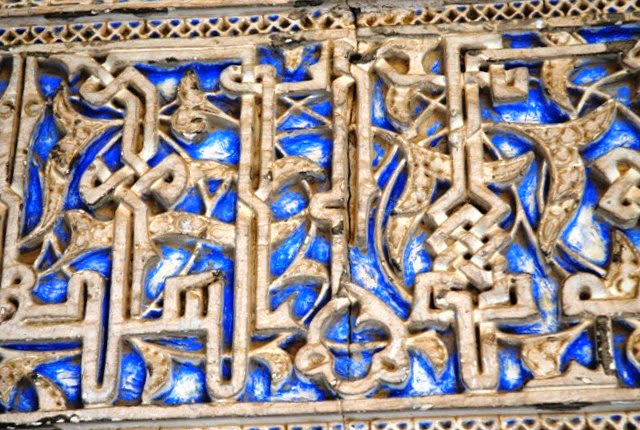We arrived in Seville early afternoon with the expectation to walk from the train station to our hotel. The expectation was based on our experience that the train stations are located in the city center. It turns out that Seville had undergone quite a bit of development in the last 20 years or so and the modern train station was quite a distance from the center. But we decided to walk to the hotel anyway. A long march under the hot sun all the way through the center exposed a lot of damage the recent development had brought to the city. New buildings and a lot of cars were not thoughtfully integrated into the old city.




We arrived to our hotel in the middle of a HOT afternoon exhausted by the long walk. The hotel staff greeted us nicely, offered iced water, but the hotel room was depressingly dingy looking with a stale cigarette’s smell. We reluctantly unpacked but did not want to stay in the room, and decided to walk out and see what’s around. The city was oppressively hot and empty; the windows were covered with heavy shutters to protect homes from the sun.


But as soon as the sun was down, a cool breeze came out of nowhere and it became rather pleasant. Unfortunately, the window of our hotel didn’t open outside, but on to something which was described as a court yard, but turned out to be an air shaft. The room was so stuffy; it was impossible to sleep. We spent the night searching for alternative accommodations. We decided to try tourist apartments which you can rent by the day. The price was comparable with the price of our hotel room. Next morning we moved to the apartment with a view on Cathedral. It was clean, tastefully decorated, had a kitchen, a balcony, a patio and even a washing machine.


Within a few hours we started to refer to this apartment as our home. Our few days in Seville were greatly improved by having a lovely
place to hide from ruthless Spanish sun,
eating food prepared from ingredients
 bought from local markets and napping
bought from local markets and napping thorough the afternoons.
Real Siesta experience!
After the living situation was settled, we started to explore Seville. The local cuisine, represented in bars and restaurants, was mostly deep fried food and ham. Vegetables were almost not available.
The jamon on the other side is omnipresent and delicious.
 The abundance of ham in Spain, of course, is not specific to
The abundance of ham in Spain, of course, is not specific to Seville but the ham vending machine we only saw there...
I have a theory, that because local fruits and vegetables are so cheap, Spaniards don’t consider them a restaurant style food. My theory was confirmed at the local market. We stopped by to get some produce and chatted with a shopkeeper while he was eating lunch right at the counter. The lunch consisted of sliced tomatoes heavily covered with onion, pepper and olive oil. All we had to do is follow suite.

The simple meals on the patio in our Seville home where far superior to anything we eat in the Seville restaurants
The visit to the Real Alcazar was another amazing experience of the Spanish Renaissance with Islamic influence (Mudejar) architecture.



The Alcazar Gardens are stunning completed with grand views from the palace arcade, lovely fountains and cozy corners


One of the coolest attractions of Real Alcazar is the Bath of Maria de Padilla which was built for her by her lover King Peter



the weird but traditional mix of images somehow feels very reflective of the Seville experience
Not much left from the centuries of Jewish presence. This is the only trace that I noticed:
The traditional industry in Seville is ceramics. It is still locally produced in the Triano district on the other side of the river. Our tour of the factories was somewhat depressing, because even this traditional industry is showing signs of decline. Many of the factories were out of business. The ceramics are beautiful, visible everywhere, and cover many aspects of life including politics, history and food, although much of it is heavily religious.
The required Spain experience cannot be complete without flamenco. An old ceramics factory in Santa Cruz is transformed into flamenco house - La Carboneria.
The setup is very simple, the entrance is free, the drinks are cheap, and the experience is exhilarating.
At the end we fall in love with the Seville. The smell of horse manure and perfume of flowers, the amazing Cathedral, the sounds of church bells and tourists luggage on cobblestone streets… The romance of old Europe is still there
























No comments:
Post a Comment